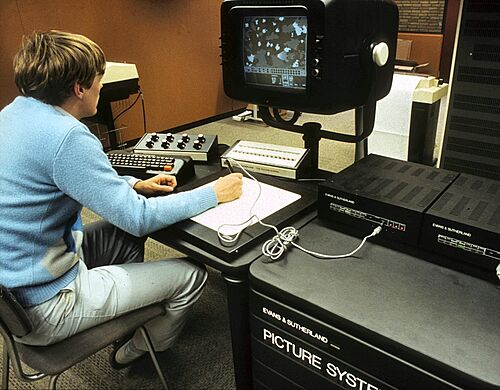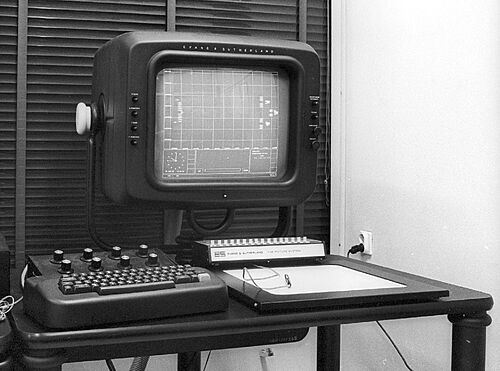Molecular visualization in the 1980s
From Proteopedia
| Line 4: | Line 4: | ||
[[Image:Cooper-jon-ps2.jpg|500px]] | [[Image:Cooper-jon-ps2.jpg|500px]] | ||
</td><td width="500"> | </td><td width="500"> | ||
| - | [[Image:Cooper-jon- | + | [[Image:Cooper-jon-ps1.jpg|500px]] |
</td></tr><tr><td> | </td></tr><tr><td> | ||
An Evans and Sutherland Picture System 2 (PS2) equipped with a light-pen and dial box. The back of the PDP-11/60 computer cabinet can be seen on the far right. Colour graphic terminals were also available. This photograph is reproduced with the permission of the Museum Waalsdorp, The Hague, Netherlands. | An Evans and Sutherland Picture System 2 (PS2) equipped with a light-pen and dial box. The back of the PDP-11/60 computer cabinet can be seen on the far right. Colour graphic terminals were also available. This photograph is reproduced with the permission of the Museum Waalsdorp, The Hague, Netherlands. | ||
Revision as of 19:36, 2 December 2024
The following article was written by Jonathan Cooper, Professor Emeritus at University College, London. (Eric Martz simply put it into Proteopedia, but had no authorship role.)
|
An Evans and Sutherland Picture System 2 (PS2) equipped with a light-pen and dial box. The back of the PDP-11/60 computer cabinet can be seen on the far right. Colour graphic terminals were also available. This photograph is reproduced with the permission of the Museum Waalsdorp, The Hague, Netherlands. |
Another E&S photograph courtesy of the Museum Waalsdorp, dated 1977. |
My first encounter with computer graphics being used in a protein crystallography laboratory was in 1984 when a class I was in was shown an Evans and Sutherland (E&S) Picture System 2, or PS2 for short. The display was black-and-white but still it was quite impressive and was one of the things that led me to go into the field as a PhD student. Thus, a year later I had the opportunity to use a colour E&S system, which was appreciably better, for my own research project. It was controlled by a PDP-11/60 which had 128k of RAM while the PS2 itself had 64k of RAM (Taylor, 1982).
A few years after that, as a post-doc, I had the privilege of being given an RK07 disk cartridge which cost the department the best part of £1000 and allowed me to store almost 30 MB of my own data, rather than begging, borrowing or stealing space on other peoples' disks. These cartridges had to be placed very carefully in one of the PDP-11 disk drives, each of which was about the size of a domestic washing machine, if not larger. The computer alone cost several times the average UK house price, as did the PS2. Although the technology was brand new in its day, these costs do seem rather excessive for a box or two of electronics. I am sure that part of the profit model was to make these machines significantly, but not massively, cheaper than employing the legions of accountants and draftsmen which they would come to replace in the commercial sector.


